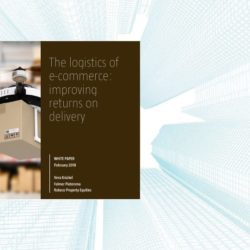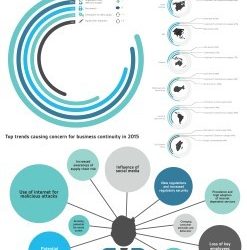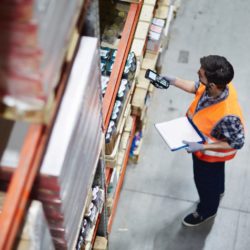Logistics costs rising as a result of e-commerce growth

While giving the logistics sector a much-needed boost, the growth in ecommerce is also creating its own challenges, according to a recent report by Robeco. Costs are rising, particularly related to last-mile delivery, forcing the industry to look for innovative solutions that will increase efficiency and save money.
Based on figures from the report, e-commerce currently amounts to 10% of global retail sales and is expected to grow by around 19% per year to become 15.5% of overall commerce in 2021. In regions such as China, that share will be even greater since penetration already stands at 22%. As consumer confidence continues to increase in online shopping, in terms of both transaction security and product quality, the numbers are already mind-boggling: 17 million parcels are delivered per day in the USA, and 27 million in China. The number of SKUs at Amazon was estimated to be around 400 million at the beginning of 2017. Ecommerce giant Alibaba has 4 million square metres of warehouse space, up by 130% from 2016, and its logistics arm Cainiao intends to invest US $15 billion over the next few years.
A step closer to robotized picking
It is likely that much of that investment will be in warehouse technology and automated solutions such as robots, artificial intelligence, drones and other innovative devices made possible by Industry 4.0. The report identifies vision technology (cameras, laser sensors, RFID devices and barcode readers) combined with deep learning and connected to the warehouse control system as being a key turning point; enabling robots to learn to ‘see’ – i.e. perceive and recognize objects – will make it possible for them to enter the warehouse as pickers. Considering the fact that 90% of all picks are done manually, and picking and packing currently account for approximately half of all labour time in a warehouse, this advancement has the potential to open up tremendous cost-saving opportunities.
Last-mile headaches
However, one of the biggest logistics challenges continues to be the last mile. Logistics efficiency gradually decreases as the goods make their way through the distribution process, with the last mile accounting for almost half of the total delivery costs according to some estimates. This also varies depending on the region, of course. In the USA, for example, last-mile delivery in dense urban areas costs $2.50 to $5 per stop, but can reach up to $30 in rural areas. One way of reducing these costs while also improving service and speeding up delivery is to conduct a distribution network assessment to ensure that warehouses are based in the most optimal locations. By the very nature of their agility, start-ups are often able to leverage opportunities to utilize free capacity elsewhere based on cloud platforms or crowdsharing. Once again, however, hardware automation could offer interesting possibilities – especially in view of the fact that, according to the study, a typical good delivered today has been touched 21 times by a human before it reaches the recipient’s doorstep. Therefore, other solutions that could potentially reduce last-mile costs include autonomous vehicles, drones and robots.
Last but not least, in this age of big data collected by the likes of barcodes, RFID tags and lasers, there are still many logistics efficiency gains to be made with supply chain management software. Utilizing algorithms, artificial intelligence and the cloud, data can be analysed and converted into information as the basis for identifying further efficiency improvements.










